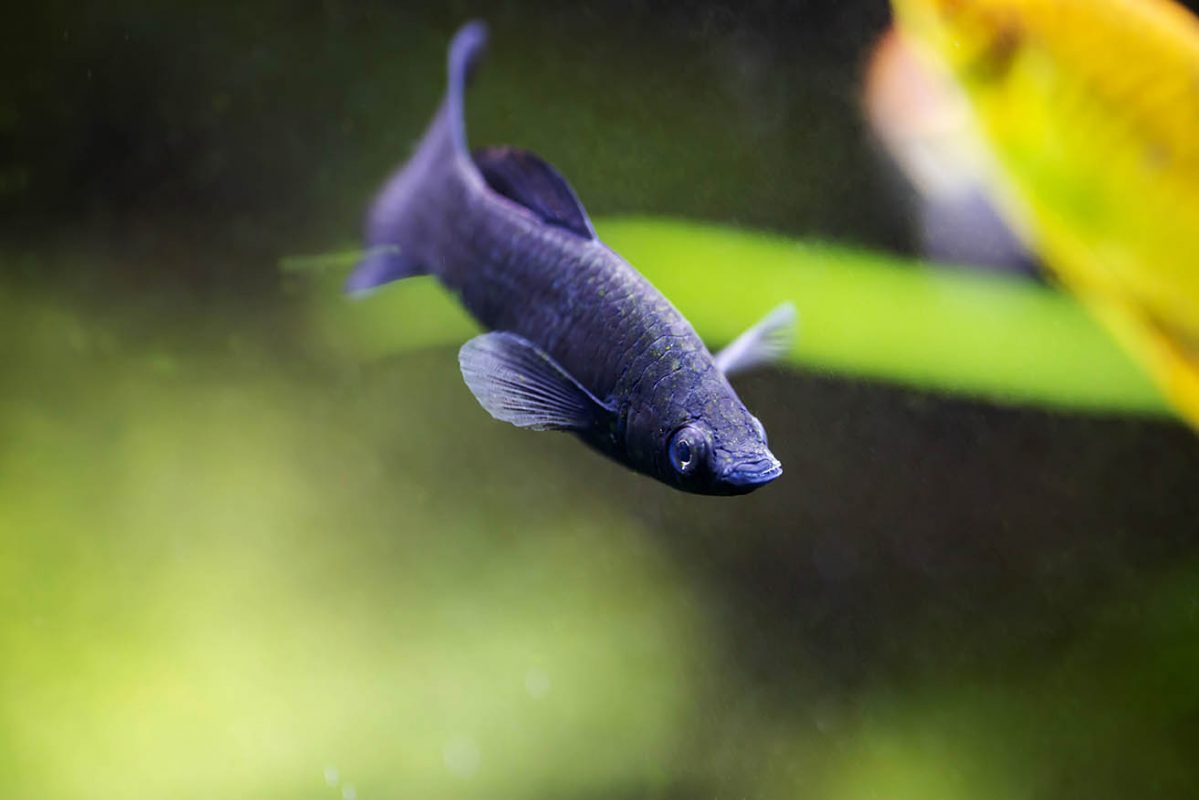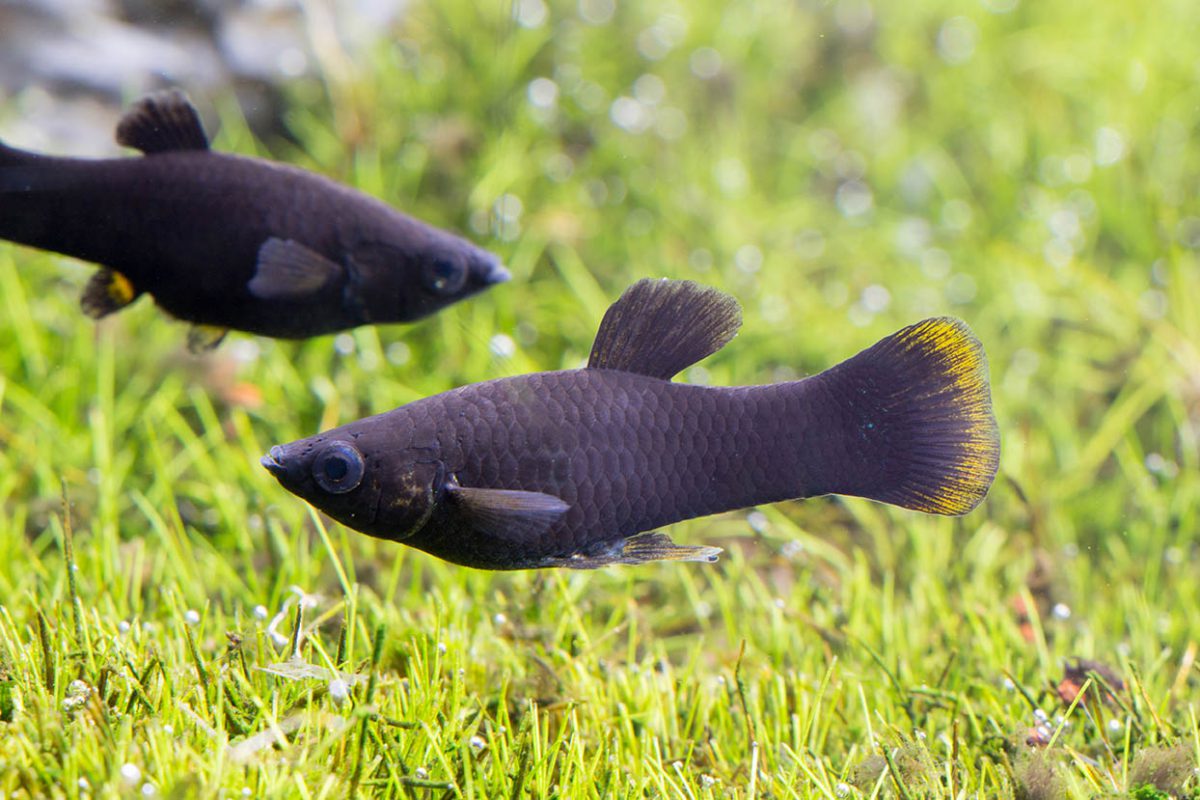Characteristics/origin
The black molly is the black cultivated breed of molly. As its name suggests, it has a black colouring: deep black scales covering its entire body along with a velvety sheen. There are also many colourful varieties with special tail fins.
Mollies generally come from Central and South America, and can be found from Mexico to Colombia. Black mollies belong to the live-bearing toothcarp family. If kept correctly, mollies can grow to around 6 – 10 cm in length and live to be 5 years old. The males have larger dorsal fins than the females, making it easy to tell them apart. Like all livebearers, the males also have a modified anal fin, the gonopodium.
Aquarium and water
To create an appropriate environment, black mollies should be kept in an aquarium with a minimum volume of 100 litres. They can be kept in aquarium water at tropical temperatures of 24°C to 30°C. Ideally, the water should be slightly acidic to slightly alkaline (pH value: 7.2 – 8.2) with a hardness level of approx. 11 – 30° dGH. While very robust, mollies are sensitive to fluctuations in temperature and pH value. They generally do not like softer water and should therefore be kept in harder water.
Keeping conditions
Black mollies are not actually shoaling fish, but feel most comfortable in groups of several creatures. There should always be more females than males in the aquarium. These very peaceful fish are well-suited to community tanks and mix particularly well with catfish, guppies and platies. Black mollies tend to prefer the middle to upper regions of the aquarium.

Planting and decoration
Black mollies feel most comfortable in water with abundant vegetation. There should be plenty of vegetation at the edges of the aquarium in particular to provide good places for the mollies to withdraw and hide. This ensures that the creatures in the rest of the aquarium still have plenty of room to swim. Fast-growing plants that reach the surface of the water are recommended in particular.
Diet
Black mollies are generally herbivorous. They should be fed mainly with fine plant-based flake food like Tetra Phyll Flakes. For a treat and extra variety, they can also be given Tetra Delica Bloodworms. They are also known to eat algae.

